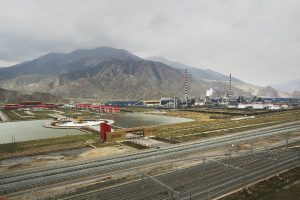The draft of a proposed Climate Change Law has been completed in the last few days. It remains unpublished but, according to reports on Caixin.com, a consultation draft may be released in October.
This would be China’s first piece of climate change legislation, designed to control and reduce emissions of greenhouse gases and promote sustainable development. The drafting process started in January 2010, with the National Development and Reform Commission leading the process and legal experts from the Chinese Academy of Sciences (CAS), the Chinese Academy of Social Sciences (CASS) and the China University of Politics and Law (CUPL) contributing.
Chang Jiwen, in charge of the drafting team at CAS, says “it’s an achievement just to complete the draft, real progress.” Chang admits the current draft is still quite abstract, but points out it has faced little opposition, indicating, he believes, a broad consensus.
Professor Cao Mingde of CUPL was also involved. He says that after three decades of rapid development, China has an “inherent need for emissions cuts.” China’s development has been won by sacrificing the environment and public health, he says. What’s more, China’s huge population puts pressure on energy and resources and the existing mode of economic expansion cannot be continued.
However, Cao has concerns that a lack of consensus on how to cut emissions may result in the draft law – which focuses on cap and trade – hampering future emissions cuts.
Cap and trade means that the emissions target is fixed – but businesses don’t know what the financial outcome of making those cuts will be, as the market price of carbon fluctuates. That uncertainty reduces the likelihood that cuts will be made. The results of the EU’s cap and trade system have not been ideal: the price on the EU carbon market is only around three Euros per tonne of carbon.
If a carbon tax is used, then the costs of emissions reduction are fixed – but the emissions target becomes unclear, and we do not know if businesses will opt to make cuts. Some may prefer to just pay the tax, which will not help reduce emissions.
Hu Min, director of the Low-Carbon Development Program at Energy Foundation China, also has carbon trading concerns. Trials of carbon trading started in China in 2010 in five cities and two provinces (Beijing, Tianjin, Shanghai, Chongqing, Shenzhen; Hubei, Guangdong). Hu worries that legislation is lagging behind the market and will not address the difficulties that carbon trading faces.
She does not therefore agree with Chang Jiwen that consensus has been reached. She thinks the draft of the law saw little opposition because it wasn’t taken seriously. “This process hasn’t been faster, and it hasn’t been taken more seriously than any other law. There’s no cause to talk of consensus or of a lack of opposition,” she says.







